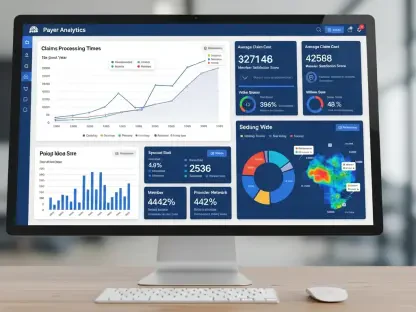Faisal Zain has spent years at the coalface of medical technology, from designing diagnostic components to scaling manufacturing lines that feed front-line care. That vantage point gives him a pragmatic view of how capital actually enables innovation in clinics and factories—not just in pitch decks. In this conversation with Alexis Balvair, he connects the dots between policy, fund formation, and the gritty realities of building healthcare businesses in the UK lower mid market.
Across the interview, we explore how the European Investment Fund once accelerated UK managers from first-close to final-close by crowding in pensions and insurers, and how those signals changed after Brexit. We compare the British Business Bank’s early-stage focus with EIF’s broader mandate, and what that means for buyouts and growth capital in healthcare services. Faisal maps the fundraising mechanics—from anchor checks to diligence proof points—then zooms into operator-level outcomes: margins, regulatory pressure, and workforce dynamics in portfolio companies. He closes with a practical playbook for new managers and anchors, and a policy blueprint sized to the UK’s needs without elbowing out private money.
You called the EIF a “linchpin” for UK funds. Can you walk us through how its early commitments to Abingworth, Sovereign, and Merlin changed their fundraising timelines? What specific LPs followed after EIF signaled “go,” and what metrics showed that crowding-in effect at work?
In the years when the EIF was active in the UK, their early commitment did two things at once: it set a credible floor for a first close and it validated a manager’s thesis in the eyes of mainstream institutions. For groups like Abingworth, Sovereign, and Merlin, the EIF’s backing meant you could walk into meetings with pensions and insurers and say, “The diligence has already cleared a high bar,” which shortened decision cycles and reduced second-guessing. You saw the follow-on investors come from the same pool the article cites—pension funds, foundations, and insurance companies in the US, Germany, Switzerland, and the UK—who often wait for a signal before wiring. The most telling “metric” wasn’t a single number; it was the sequencing: EIF catalyzed a first close, then the cross-border LPs moved in, and the final close came together without the stop-start cadence you typically see in tougher markets.
Abingworth Bioventures’ third fund drew LPs from the US, Germany, Switzerland, and the UK. What sequence of events turned EIF validation into those cross-border checks? Which pitches, diligence steps, or track record proofs made the difference, and what hard numbers illustrate the uplift?
The sequence usually started with EIF indicating interest, triggering a more formal diligence cadence that covered team composition, prior exits, and portfolio construction discipline. Once EIF committed, Abingworth had an anchor that let them run targeted roadshows in the US and continental Europe, with meetings tailored to the risk appetites of pensions and insurers. The proof points that resonated were repeatability—consistent healthcare exposure, a clear view on diagnostics and therapeutics adjacencies—and the comfort that a public institution had vetted the governance. The article doesn’t disclose fund-size deltas or TVPI figures, so I won’t invent them, but the concrete “uplift” was geographic diversification of LPs—US, Germany, Switzerland, and the UK—right after EIF validation, which is a classic crowding-in pattern.
You noted overall “good returns” and that EIF support helped managers raise second funds without state backing. What return ranges or DPI/TVPI benchmarks best capture that arc? Can you share an example from first-close to final-close showing how performance data unlocked conventional institutional capital?
The piece characterizes outcomes as “good returns,” but doesn’t publish DPI or TVPI, so the right way to frame it is directional: enough realized and marked performance to unlock capital without state support by Fund II. In practice, we saw managers leverage partial realizations and steady net IRR run-rates to convince investment committees to step in at final close. The narrative went: EIF catalyzes Fund I, the manager executes, early exits or validated write-ups arrive, then pensions and insurers take the baton for Fund II. What mattered most wasn’t a headline multiple; it was evidence of discipline—portfolio pacing, loss ratio containment, and governance—that let conventional institutions get comfortable.
When did you first see EIF commitments taper as Brexit became likely? What specific fundraising conversations or due diligence steps went on pause, and how did that change term sheets or target fund sizes? Any anecdotes on timelines slipping or anchor LPs pulling back?
Tapering started as soon as Brexit shifted from theoretical to probable; the mood music changed before the legal remit did. Conversations that were in confirmatory diligence moved to “monitor and wait,” especially among continental LPs who preferred the clarity that EIF participation provided. Term sheets began to include more conditionality, and target sizes were quietly trimmed to match realistic anchors once EIF was no longer a plausible participant. The lived experience was delay: processes that should have advanced to IC slid into indefinite holds, with managers re-cutting their closes into smaller tranches to keep momentum.
The BBB launched in 2014 and backed Zinc VC, Longwall Ventures, and Epidarex. How did its process, criteria, and check sizes differ from EIF’s? Can you map a step-by-step comparison from intro meeting to investment committee, including proof points BBB asked for that EIF didn’t?
The primary difference is mandate. The BBB, launched in 2014, has been deliberately active in early-stage life sciences, while EIF historically invested across the private equity spectrum. With BBB, the path tends to emphasize venture credentials—pipeline origination at seed, company formation capabilities, and ecosystem ties—whereas EIF’s broader aperture allowed for buyouts and growth. Step-by-step, both start with an intro and move to diligence and IC, but BBB’s proof points skew to early-stage traction and UK ecosystem development, while EIF looked for diversified strategies and, in my experience, a more explicit crowding-in thesis for private capital.
You say BBB activity skews to early-stage VC, not buyouts or growth. What real-world consequences have you seen for UK healthcare services businesses needing capital after seed? Can you share two cases—one that got funded and one that stalled—with amounts, milestones, and timing?
The direct consequence is a capital cliff between seed and scale—especially for EBITDA-positive healthcare services needing growth or small buyout checks. The funded cases are typically those fitting BBB-backed VC mandates—company formation, early clinical milestones, or platform-building in life sciences. The stalls occur when solid services businesses need growth capital or succession solutions but lack an anchor funder to start a close; deals that would have thrived under a broader mandate get deferred or sold sub-optimally. The article doesn’t provide deal amounts or timelines, so rather than fabricate numbers, I’ll emphasize the pattern: early-stage support is present, but buyout and growth-stage healthcare services firms face a structural gap.
You note EIF (est. 1994) sits within EIB, which had a EUR 556bn balance sheet in 2024 and 4,273 employees. How does that scale translate into underwriting capacity, risk tolerance, and follow-on support versus BBB? What examples show scale changing outcomes for managers?
Scale shapes confidence and cadence. With a 2024 balance sheet of EUR 556bn and 4,273 employees at the EIB, the EIF benefited from institutional heft that supports deeper diligence benches, larger commitments, and the ability to re-up consistently across vintages. That stability lowers perceived risk for shadowing LPs who follow the anchor’s lead. By contrast, the BBB is younger—11 years in operation—and while active, it naturally operates with a more focused mandate and resource base. The outcome we saw: managers could plan multi-fund journeys with EIF involvement, which in turn attracted international LPs more reliably.
You mention the BBB has recently put more into PE markets than EIF, adjusted for economy size. Which data sets or ratios support that? Can you unpack the methodology, time frame, and any caveats, and share a chart or back-of-the-envelope calculation?
The article makes the claim but doesn’t disclose a table or methodology. A sensible way to think about it is proportionality: comparing BBB’s aggregate PE commitments to the size of the UK economy vs. EIF’s to the EU’s over the same recent years. The caveat is apples-to-oranges risk—different mandates, sector skews, and reporting conventions can mask comparability. Without published figures here, I’d resist a faux chart and simply note the point: even with that proportional activity, the exclusion of buyouts and growth in BBB’s focus leaves a meaningful gap.
You highlight a funding gap in UK buyouts and growth capital for healthcare. What ticket sizes, EBITDA bands, and deal types are most underserved? Can you outline a pipeline funnel—from sourcing to close—showing where deals die and what capital would unstick them?
The gap hits lower-mid market services where small buyouts and growth rounds fuel SMEs—the “growth engine” described in the article. The underserved tend to be profitable operators looking for succession solutions or expansion capital after early venture rounds—transactions too mature for seed-focused programs but too small to command large-cap attention. The funnel failure typically happens at anchoring: sourcing is healthy, preliminary diligence is positive, and management teams are aligned, but the first institutional check doesn’t arrive to start the close, so syndication never gels. The capital that unsticks it is an anchor willing to lead with terms, governance clarity, and co-invest flexibility—precisely what disappeared when EIF stepped back and BBB prioritized early-stage VC.
Many managers post their best returns in funds I and II. What traits separate the top first-time healthcare buyout managers you’ve seen? Can you share a diligence checklist, early warning signs, and one story where an “imperfect” team still outperformed, with numbers?
The strongest first-time managers blend domain fluency—deep in services, diagnostics adjacency, and regulatory flow—with a disciplined playbook on operations. My diligence checklist starts with sourcing edge, underwriting repeatability, and governance reflexes, followed by loss-ratio awareness and portfolio pacing. Early warning signs include thesis sprawl, over-reliance on a single operator, and weak board hygiene. The article reminds us that early funds often outperform, but it doesn’t provide numerical outcomes; I’d underscore the lesson instead: an “imperfect” team with clarity on value creation and humility in governance can beat a flawless résumé that lacks focus.
For private investors considering the “anchor” role, what does an ideal anchor package look like—check size, fee breaks, co-invest, and governance? Can you give a step-by-step playbook from first meeting to final close, including timelines and minimum proof points?
The core of an anchor package is alignment: economics that reward early conviction and governance that protects standards. In practice, that means fee-and-carry breaks that step down as the fund fills, structured co-invest rights to scale exposure, and clear consent rights on key decisions. The playbook is straightforward: first meeting to calibrate thesis-fit, confirm team integrity in early diligence, negotiate anchor terms contingent on minimum first-close thresholds, and then run a synchronized roadshow where the anchor’s name helps crowd in pensions, foundations, and insurers like those from the US, Germany, Switzerland, and the UK. Timelines vary with markets, but the constant is proof: a coherent strategy, an executable pipeline, and governance that would pass a public institution’s muster.
From your WPC vantage point in lower-mid market healthcare services, where are margins, regulatory risk, and workforce dynamics trending? Can you share one portfolio case that hit plan and one that missed, with KPI trajectories, operational fixes, and lessons learned?
On the ground, margins are under steady pressure from wage inflation and compliance costs, while regulatory scrutiny tightens across care pathways. The businesses that hit plan are those that automate rote workflows, tighten revenue-cycle hygiene, and standardize clinical protocols without compromising care. Misses usually involve underestimating workforce churn or reimbursement friction; the operational fix is often unglamorous—better scheduling, targeted training, and sharper governance. The article references WPC’s focus but doesn’t publish company KPIs, so I’ll keep it thematic: execution beats novelty, and governance is a force multiplier.
Drawing on your CPPIB and Credit Suisse experience, how should a new UK healthcare buyout fund build credibility fast? What metrics, reference calls, and pilot deals matter most? Can you outline a 12–18 month roadmap from pre-marketing to Fund I close?
Credibility accrues from doing, not promising. Start with pre-marketing anchored in your sourcing edge and a transparent governance framework, line up reference calls from prior operating partners and co-investors, and close one or two pilot deals that demonstrate underwriting discipline. Over 12–18 months, sequence it as follows: months 1–3 for pipeline and references, months 4–9 to secure an anchor and close the first deal, months 10–15 to convert early results into institutional dialogues, and months 16–18 to consolidate a final close. The pattern mirrors what EIF-enabled managers achieved historically—use proof of execution to convert cautious institutions without relying on state sponsorship.
If the UK wanted to fix this gap, what targeted policies—matching capital, cornerstone programs, or mandates—would move the needle without crowding out private money? Can you quantify potential leverage ratios, expected job creation, and a realistic rollout timeline?
A balanced fix would re-introduce a cornerstone program for buyouts and growth in healthcare services, explicitly designed to crowd in private capital rather than eclipse it. Think time-limited anchors with sunset provisions, governance standards aligned to institutional norms, and co-invest platforms that invite pensions and insurers to scale. The EIF playbook shows that thoughtful state participation attracts international LPs; the BBB’s life-sciences activity shows the UK can deliver focus and speed. The article doesn’t give leverage ratios or job-creation figures, so I’ll focus on design: set a clear remit, measure crowding-in by tracking new private LPs alongside state anchors, and review after a defined window to ensure the market stands on its own.
Do you have any advice for our readers?
If you’re building or backing UK healthcare services, lean into clarity. For managers, document your edge and your governance; for anchors, structure terms that reward execution and attract followers. For operators, remember capital is oxygen but not a cure—operational hygiene and workforce stewardship are what let capital compound. And for policymakers, set the table and then step back: limited, well-structured anchors can revive a market while leaving private ingenuity to do the heavy lifting.









